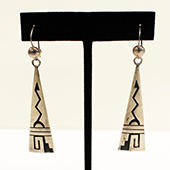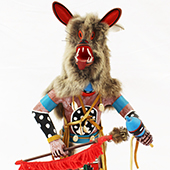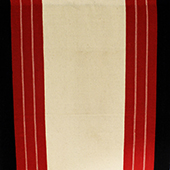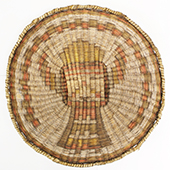Pottery
Hopi potters draw on traditions that go back centuries. Hopi ancestors made pots as long ago as 700 CE.
Pottery making was, and still is, a social activity. Traditionally, Hopi pottery was the domain of women. Pottery activities like digging clay, gathering materials for paint, coiling the clay, decorating, using, and even selling pots, build social and familial connections among Hopi women.
Early Hopi pottery was strictly utilitarian or for ceremonial use. Pottery was made without pottery wheels, molds, or kilns. Every pot was hand coiled and shaped before being fired in outdoor earthen pits. All materials used to make pottery were collected from Hopi lands.
By the early nineteenth century, Hopi pottery making was a dying art. Thankfully, by the end of the century several things happened to revive the art form. In late 1800s, outsiders began to appreciate the artistry of Hopi potters. Once non-Hopi began to purchase and collect Hopi pottery, styles evolved and changed to appeal to buyers.
Around the same time, Hopi-Tewa potter Nampeyo began to base her pottery on ancient styles. Nampeyo was born between 1857 and 1859 in the Hano village on the Hopi Reservation. Her grandmother taught her pottery making, but she disliked the style of pottery being made. Around 1890, Nampeyo visited Hopi archaeological sites like Sikyatki, where she found and studied ancient pottery shards. She believed the ancient forms and designs were superior to what she and her contemporaries were creating. Nampeyo reproduced these forms and designs in her own work. This “new” pottery style was quickly embraced by collectors. Nampeyo is a world-renowned potter and is often credited with bringing about the Hopi pottery revival.
Nampeyo’s daughters and descendants created a pottery making legacy that continues into the present day. The potters D. Tootsie, Carla Nampeyo, Fannie L. Polacca, Adelle L. Nampeyo, and Vernora Polacca Nampeyo represented in this exhibit are a part of this famous family.
Today, both male and female Hopi potters believe it is important to mentor and share their knowledge and skills with younger potters because they do not want the Hopi pottery traditions to be lost. The new generation of Hopi potters continue to build on the knowledge passed to them by combining traditional themes with new shapes and techniques to create beautiful pots.
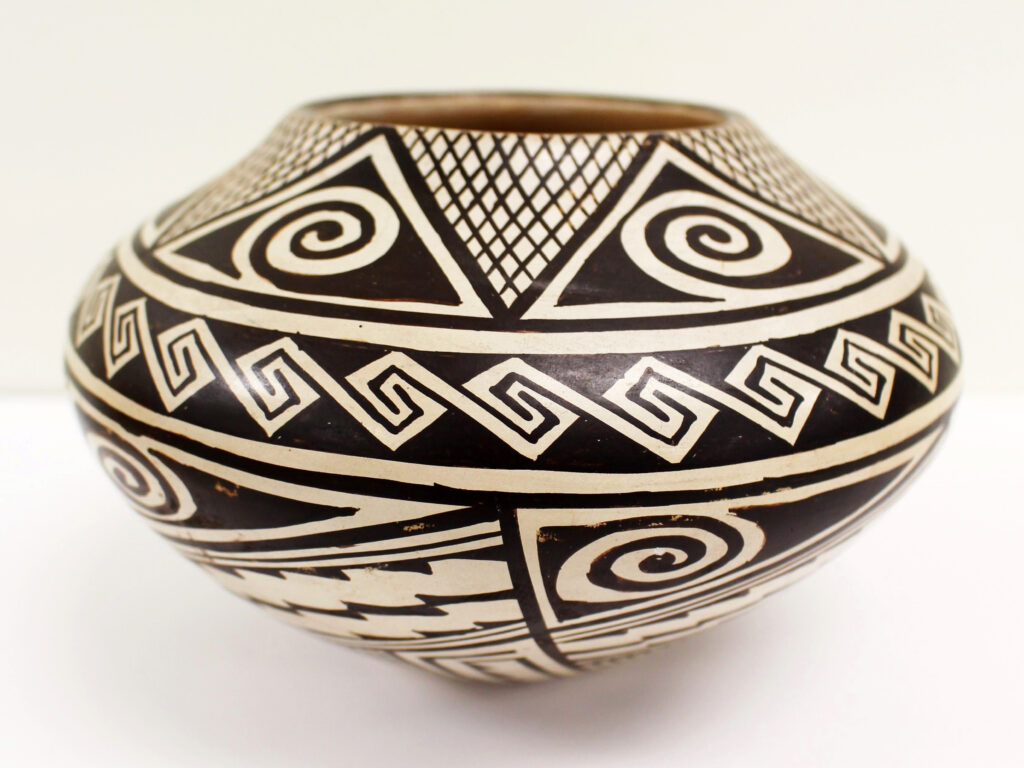
Pot
Helen Naha (1922-1993)
1993.10.E.08
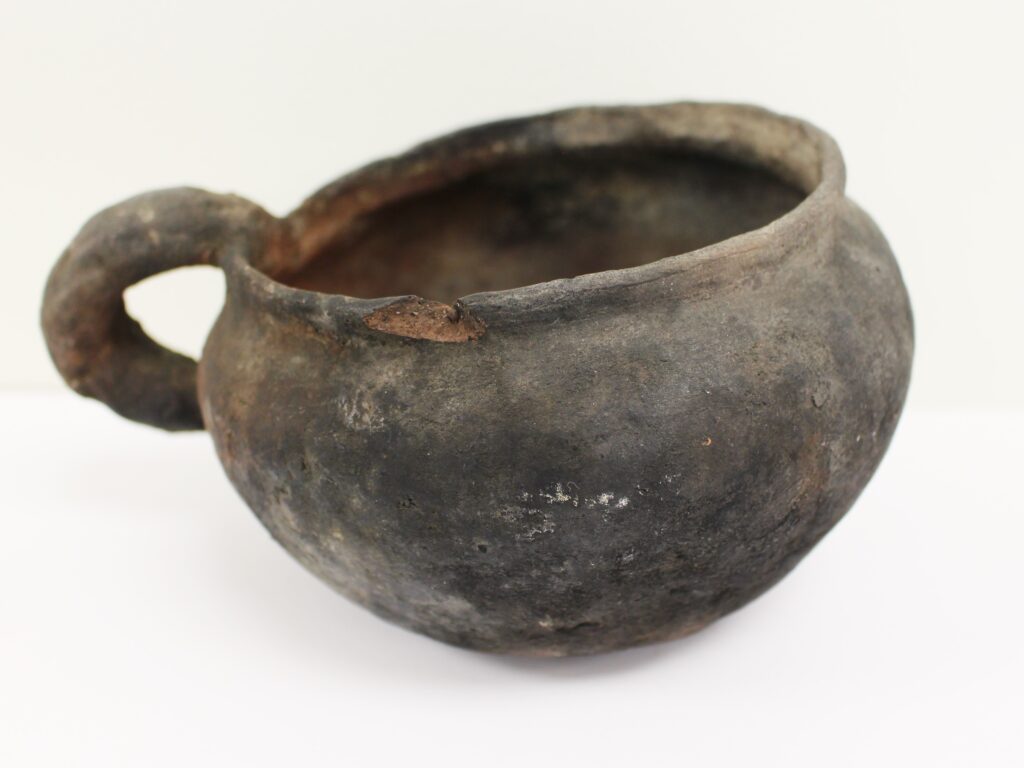
Pot
1983.E.004
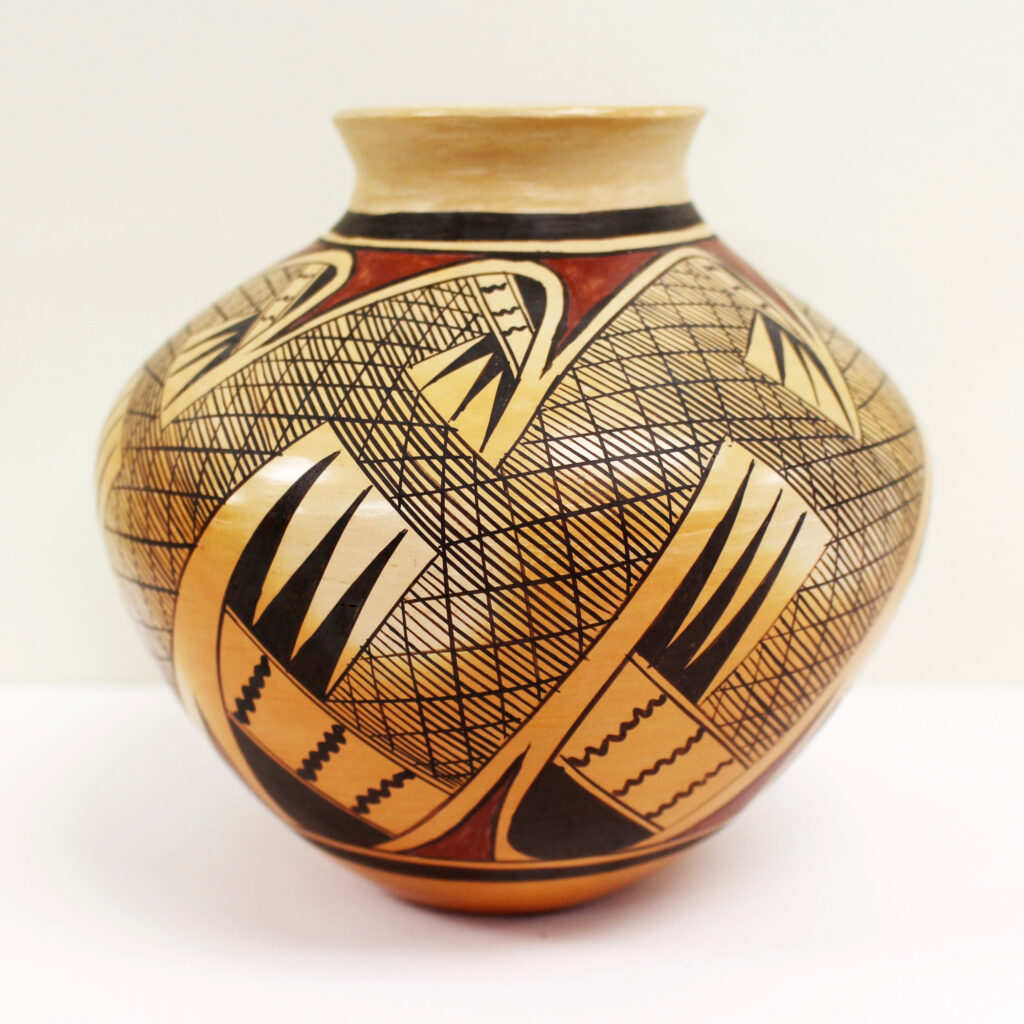
Pot
Vernida Polacca Nampeyo (1955-)
On loan from Mr. Frank Warfield
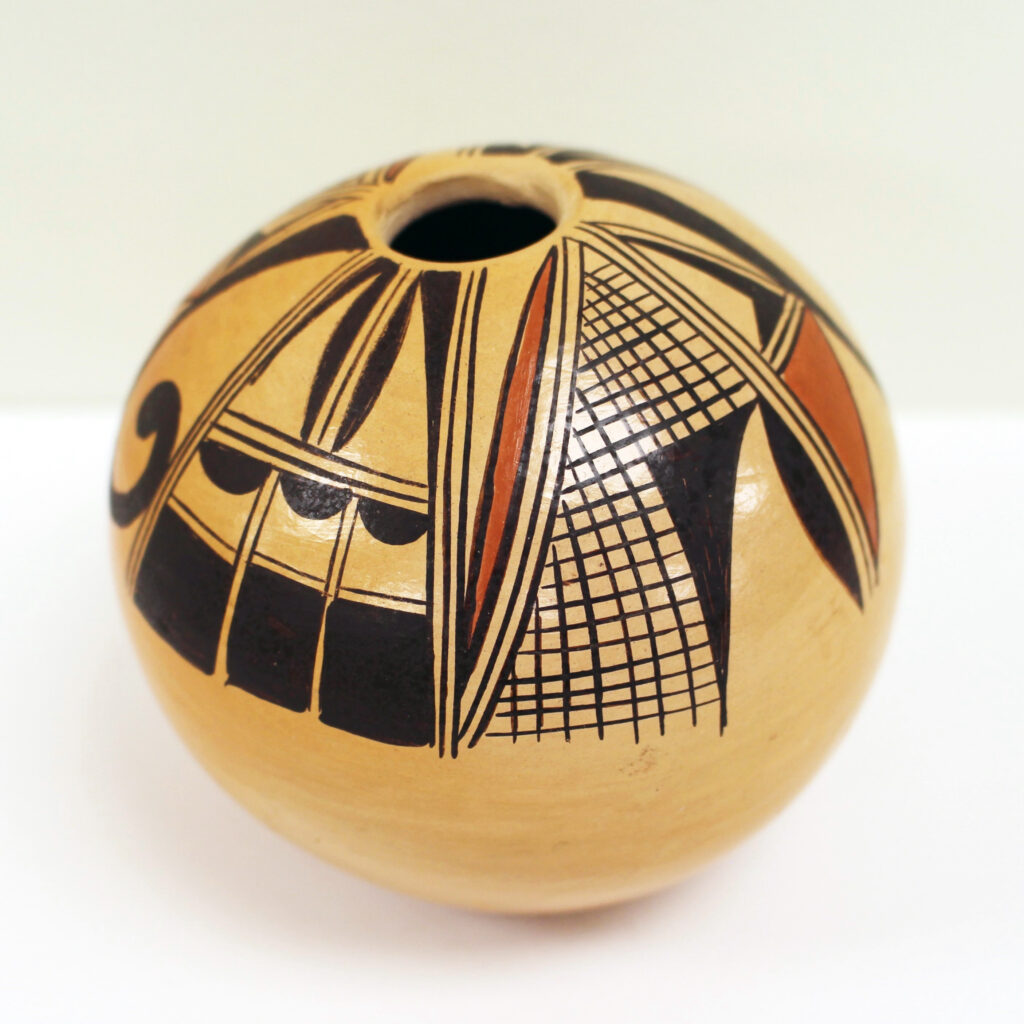
Pot
Adelle L. Nampeyo (1959-)
On loan from Mr. Frank Warfield
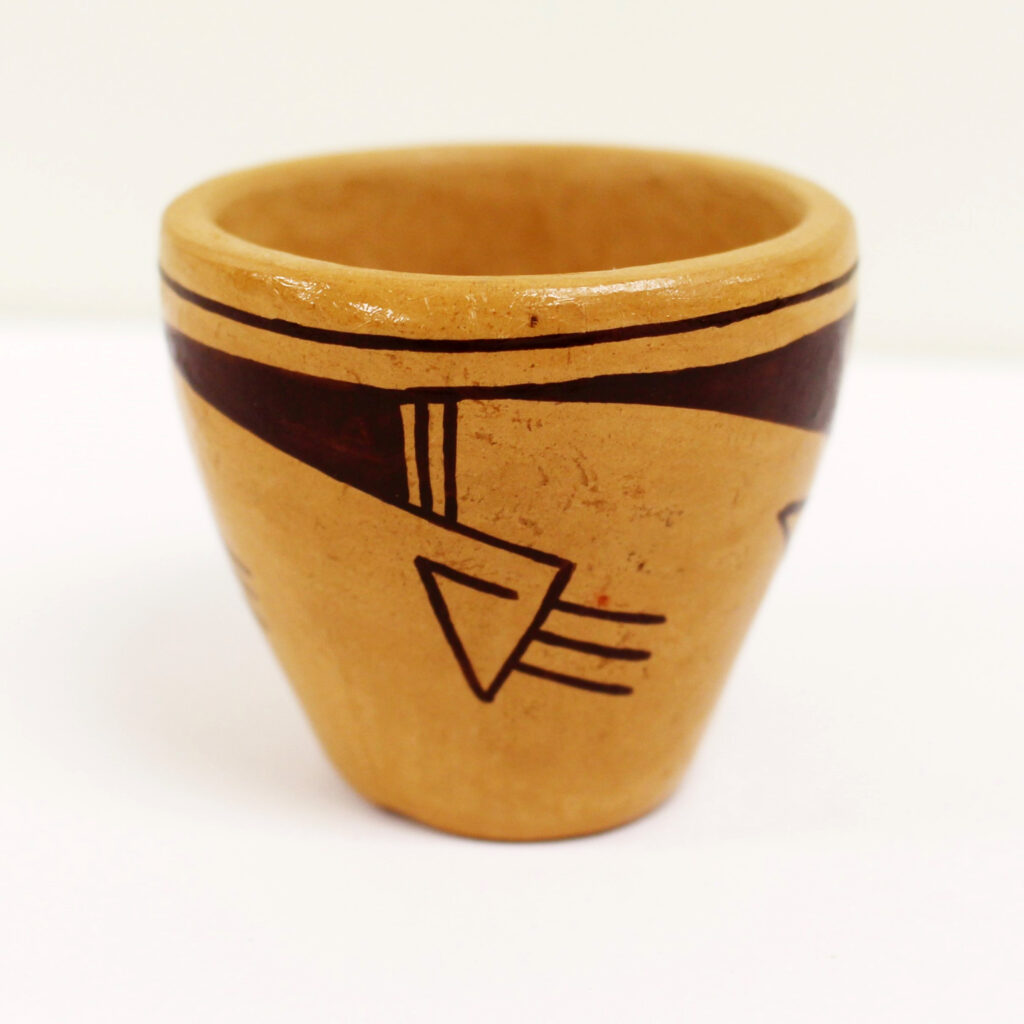
Mini Pot
Loretta Silas Poleahla (1964-2007)
On loan from Mr. Frank Warfield
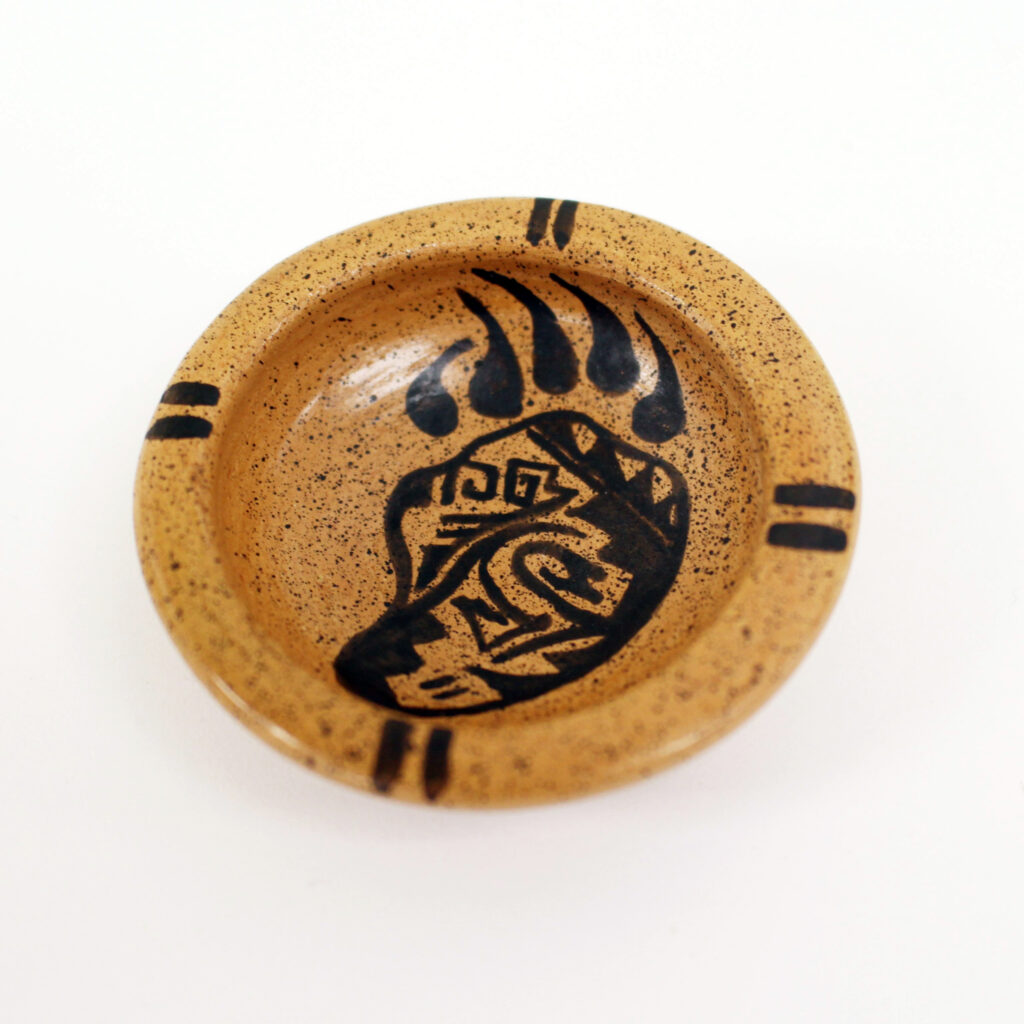
Mini Pot
D. Tootsie (1962-)
On loan from Mr. Frank Warfield

Mini Pots
D. Tootsie (1962-)
On loan from Mr. Frank Warfield
These pots are in a shape called olla. Ollas can have either short wide necks with wider bellies or narrow necks with wide bellies. Traditionally, they would have been larger in size so they could be used for cooking, storing food or water, or serving food. Miniature ollas like these are strictly artistic pieces.
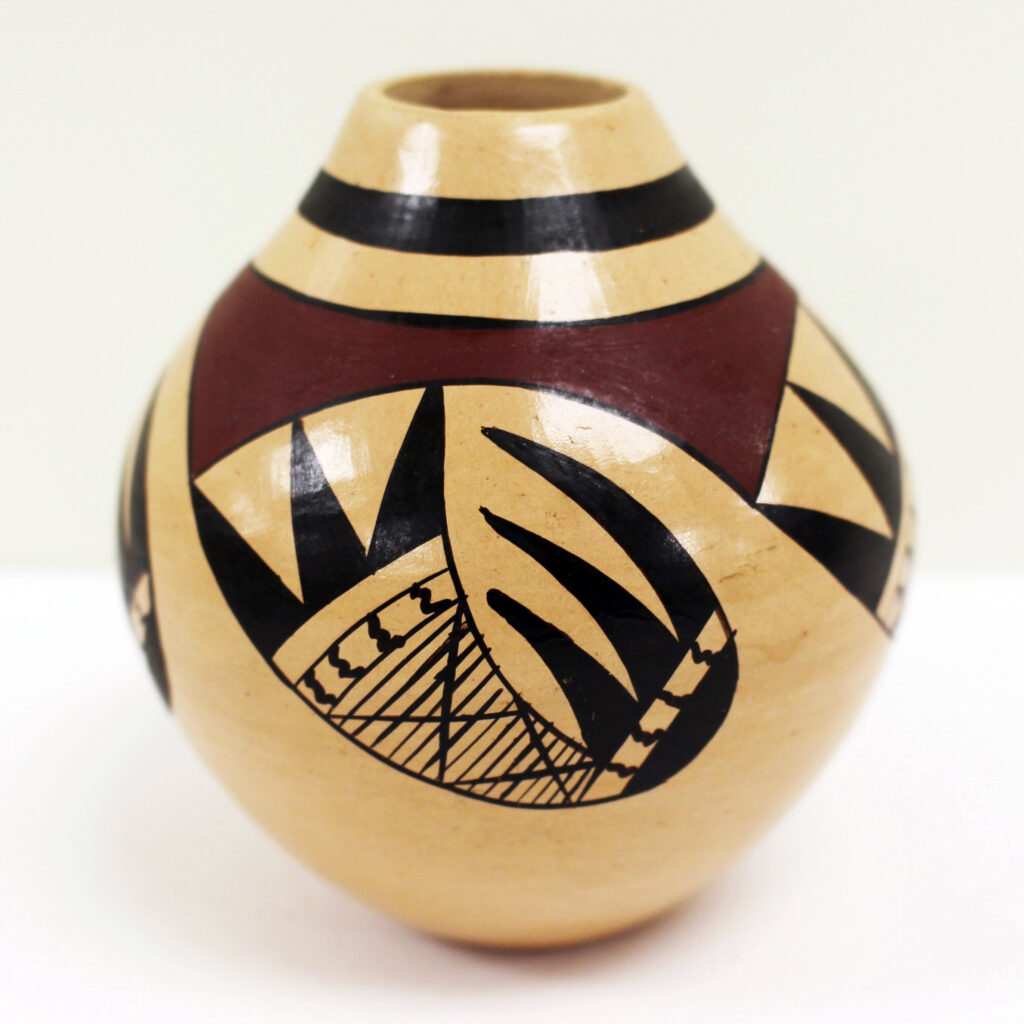
Small Pot
Carla Nampeyo (1961-)
On loan from Mr. Frank Warfield
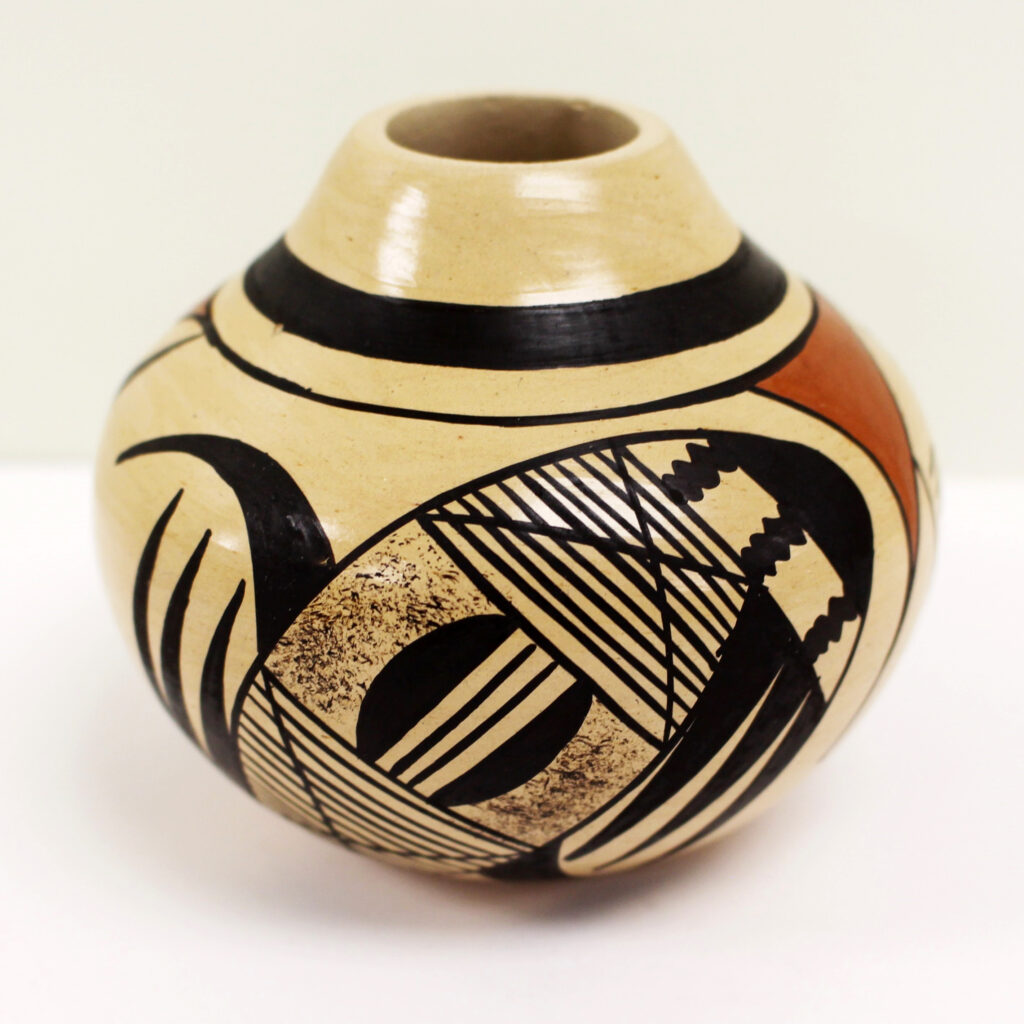
Small Pot
Carla Nampeyo (1961-)
On loan from Mr. Frank Warfield
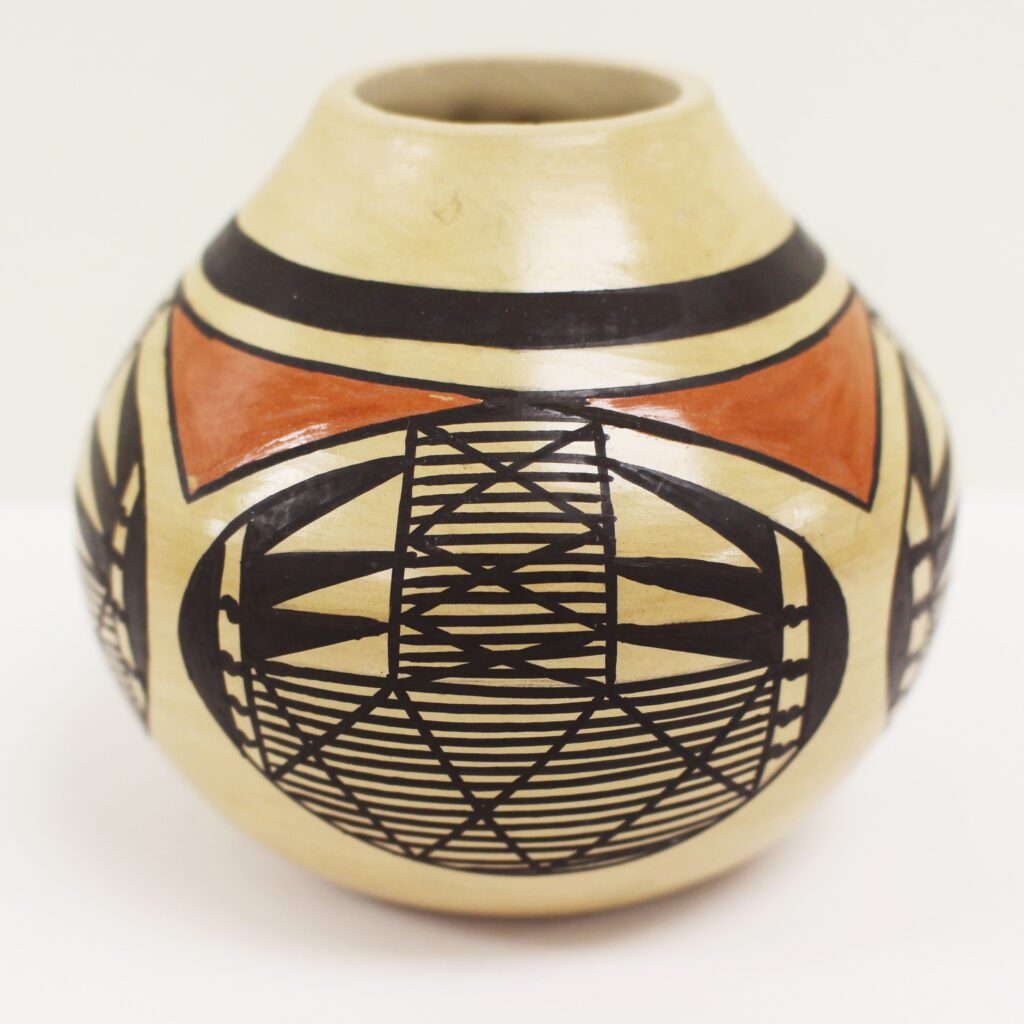
Small Pot
Carla Nampeyo (1961-)
On loan from Mr. Frank Warfield
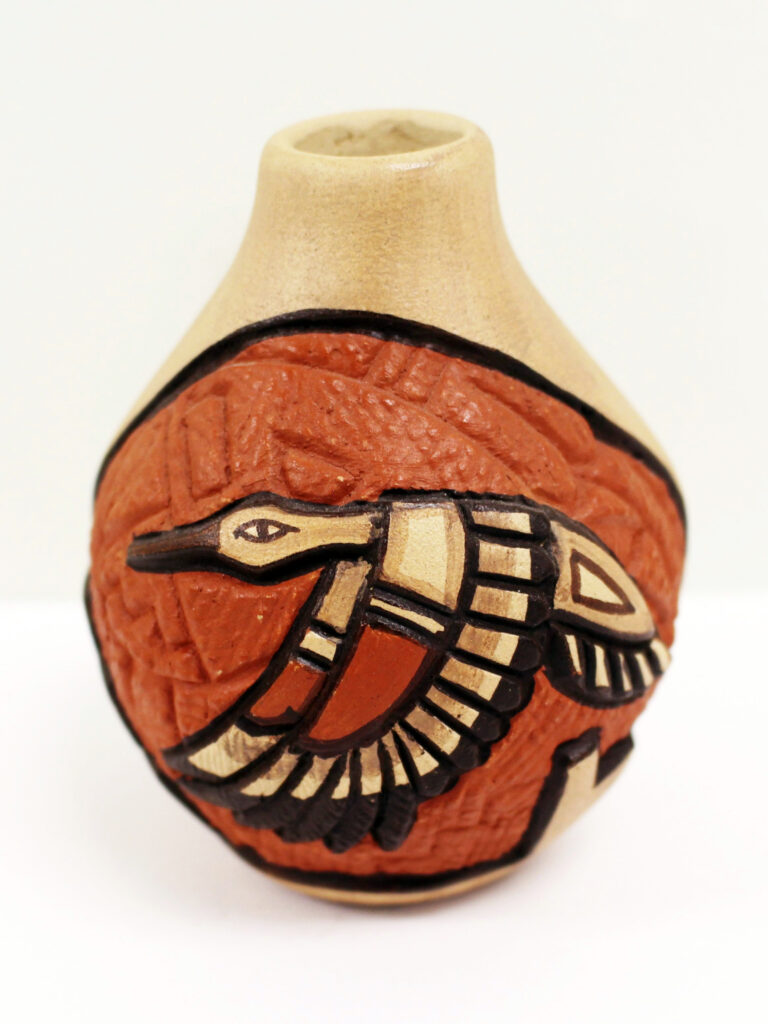
Small Pot
Carla Nampeyo (1961-)
On loan from Mr. Frank Warfield
This pot is an example of Nampeyo’s sgraffito pottery. Sgraffito is a technique that involves incising or carving through the top layers of clay to reveal different clay underneath creating contrasting images, patterns, and textures.
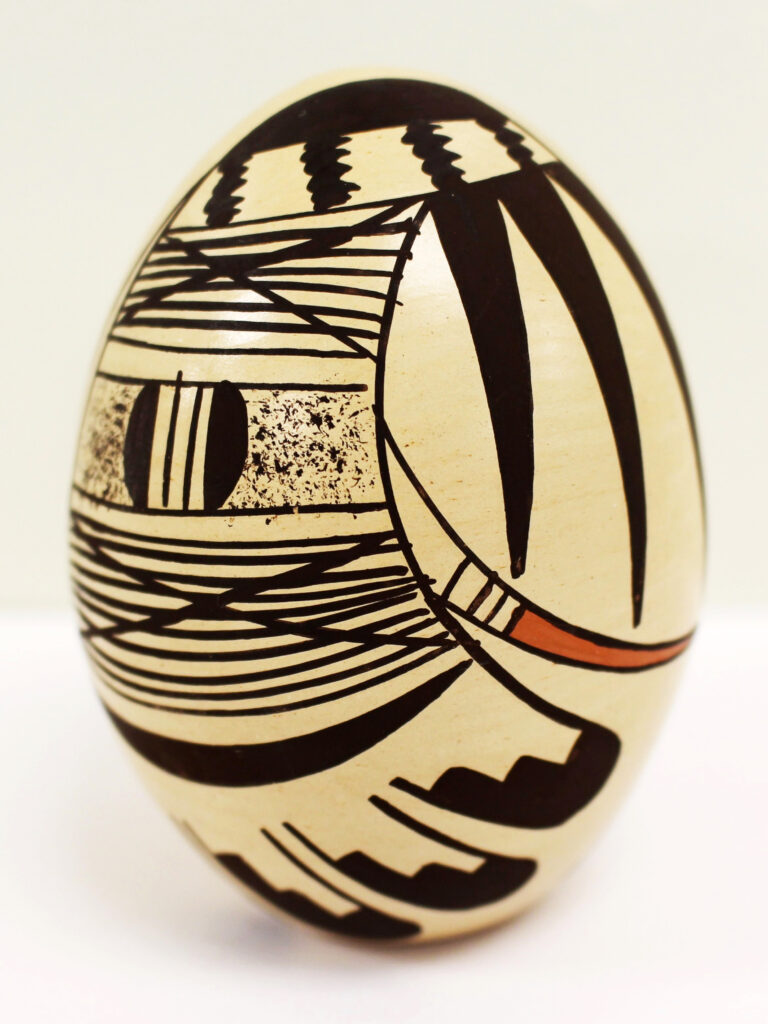
Egg
Carla Nampeyo (1961-)
On loan from Mr. Frank Warfield
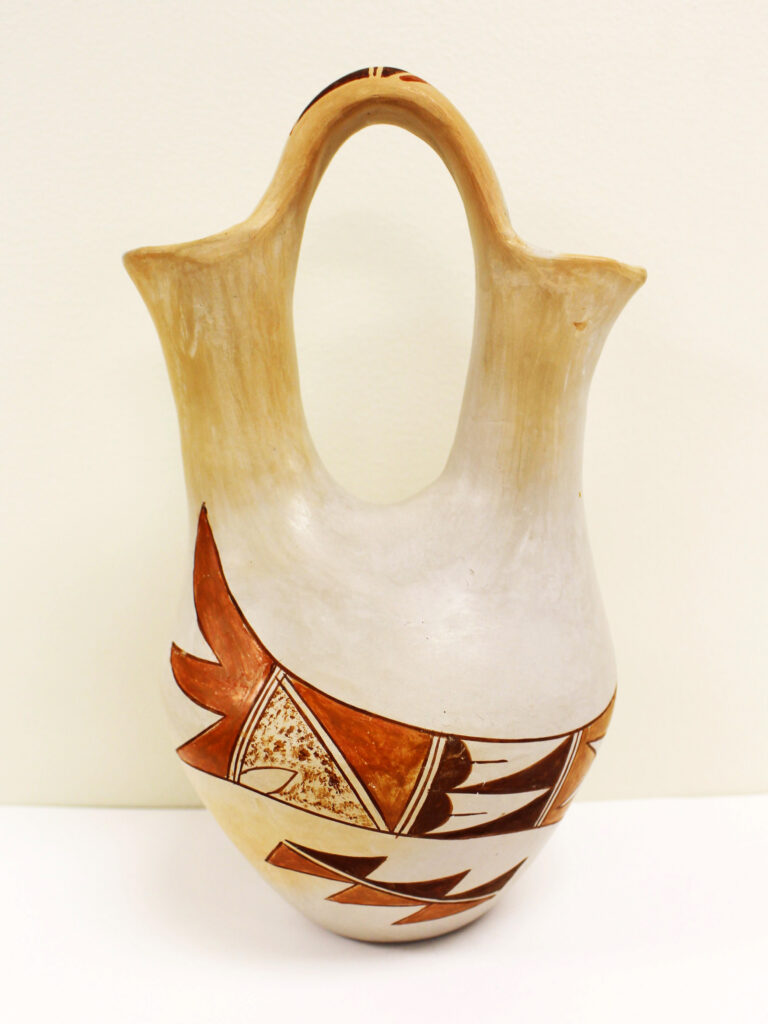
Wedding Vase
Pauline Setalla (1930-)
1993.10.E.02
A wedding vase is a traditional vessel which is still a part of many American Indian wedding ceremonies. It is often built by the groom’s parents. The two spouts represent the two people being married. The looped handle represents the unity of marriage and the space within the loop is the circle of the couple’s life together.
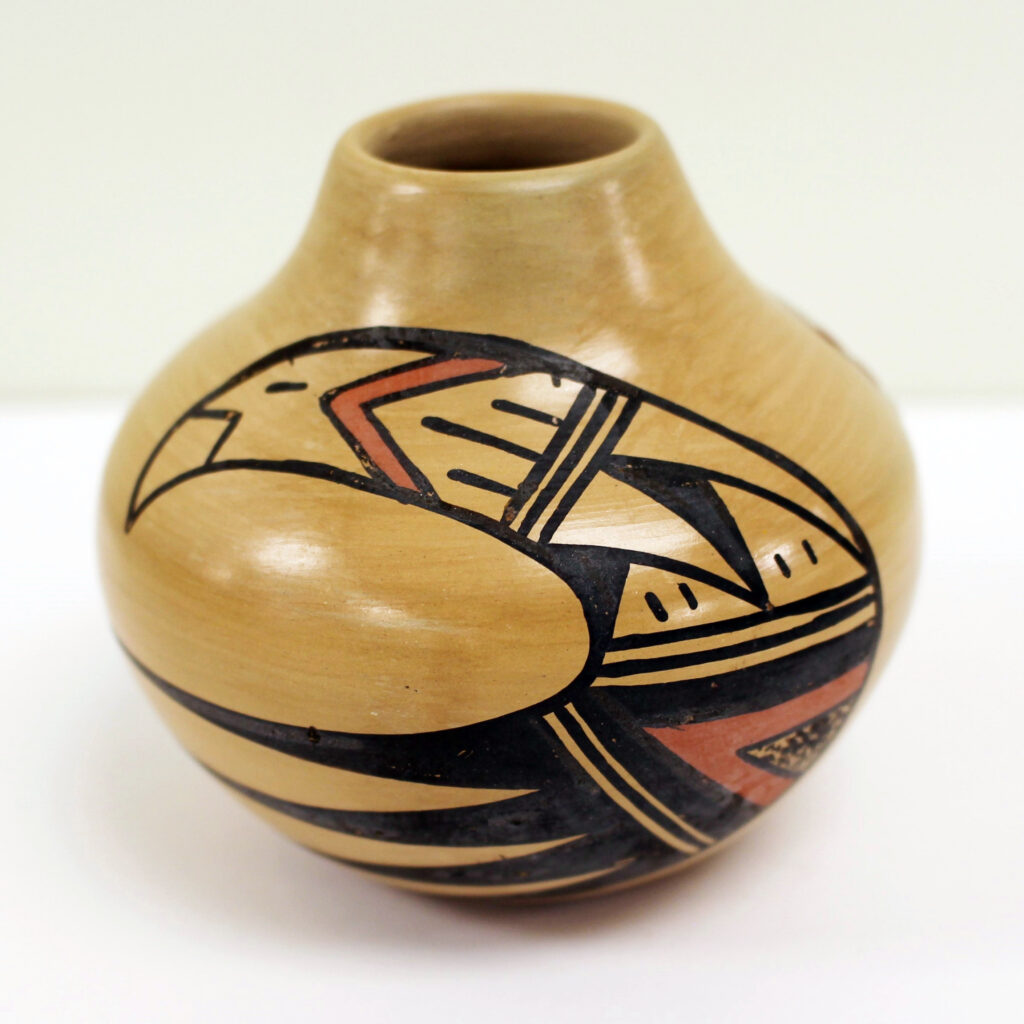
Small Pot
Fannie L. Polacca (1900-1987)
On loan from Mr. Frank Warfield
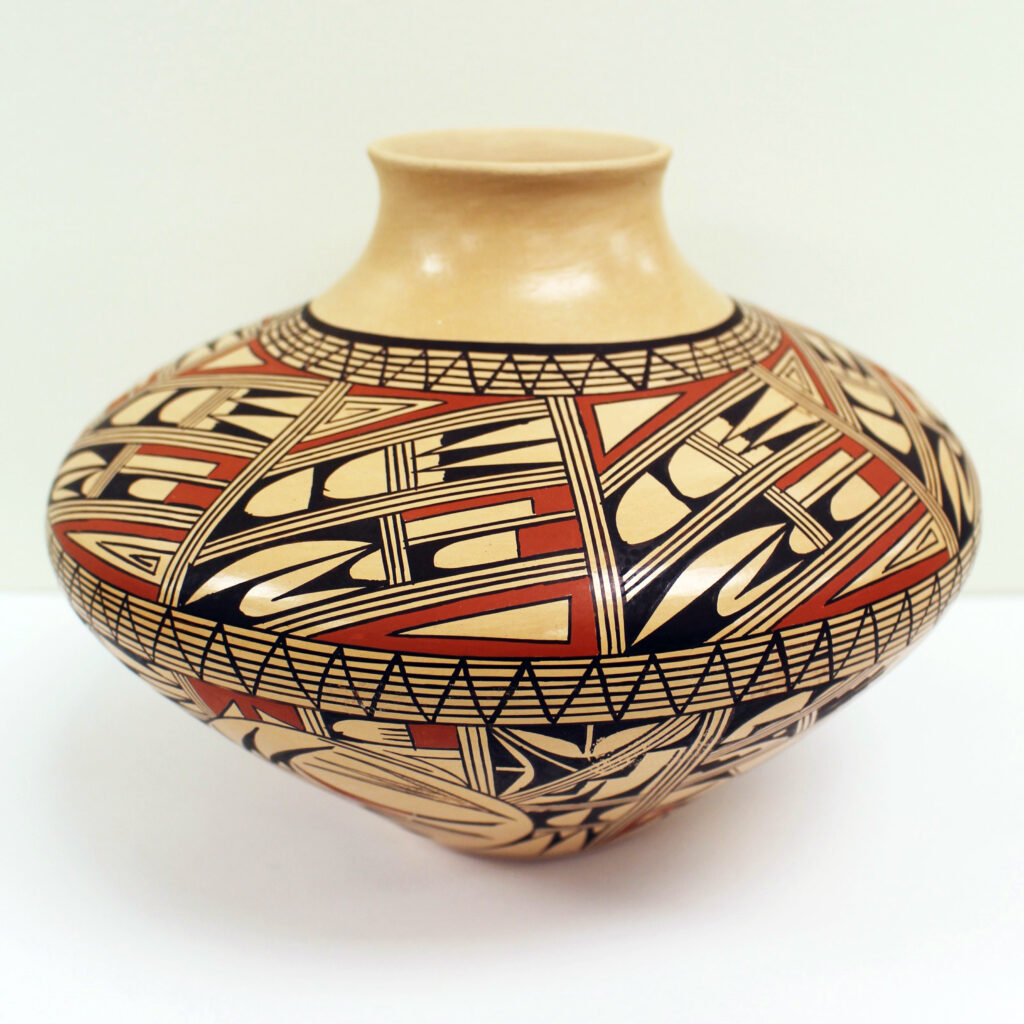
Pot
Venora Silas (1967-)
On loan from Mr. Frank Warfield
Artist Profiles
Helen Naha (1922-1993) was born in the Hopi-Tewa community on the Hopi Reservation and was a member of the Spider Clan. She was mostly self-taught but did follow her mother-in-law’s style. She created hand-coiled pots that were based on pottery found at ruins on First Mesa. Early in her career she was known for her stark black-on-white pottery. Later in her career she became known for her beautiful polychrome pots. She left an impressive body of work, but even more importantly her family members are carrying on the name and art. The Southwest Association for Indian Arts created the Helen Naha Memorial Award for Excellence in Traditional Hopi Pottery in recognition of her and her body of work Her hallmark is a feather, so she is also known as Feather Woman.
Adelle Lano Nampeyo (1959-) was born in the Hopi-Tewa community on the Hopi Reservation. She has been an active potter since 1970 and uses traditional hand coiling and natural materials to create her pottery. Painting fine lines and eagle tails are some of her favorite designs. Her works are signed with her name and have a painted corn stalk as her hallmark.
Carla Claw Nampeyo (1961-) was born in the Shongopovi village on the First Mesa and is a member of the Snow clan. She has been an active potter since the mid-1970s. Nampeyo is known for her innovative sgraffito carving style, a technique she learned from her father. She also specializes in dark brown polished slipped pottery. Her works are signed with her name.
Vernida Polacca Nampeyo (1955-) was born in the Hopi-Tewa community on the Hopi Reservation and is a member of the Corn and Kachina clans. She learned pottery making from her grandmother Fannie Nampeyo and has been active since 1979. Nampeyo is well known for finely painted traditionally designed Hopi pottery. Some of her favorite decorations are migration pattern, butterflies, moths, bat wings, weather symbols, and bird elements. She signs her name to her works.
Fannie L. Polacca (1900-1987) was born in the Hopi-Tewa community on the Hopi reservation and was a member of the Corn Clan. Polacca was a prolific potter during her lifetime. She only made hand-coiled pottery and some of her favorite designs were clouds, rain, feathers, stars, and migrations motifs. Several of her children are famous potters. Her works are signed with her name and have a drawn corn symbol as the hallmark.
Loretta Silas Poleahla (1964-2007) lived in the Polacca village on the Hopi Reservation. She was part of a famous pottery making family. Poleahla was a traditional potter, who learned from her mother Roberta Youvella-Silas. Her works are signed with her name and have Hopi in quotation marks as the hallmark.
Pauline Setalla (1930-) was raised in the Mishongnovi village on the Second Mesa. She married into the Frog Woman/Feather Woman families and learned pottery making techniques from her mother-in-law and sister-in-law. Setalla’s pottery is all made from native clay and formed using the traditional coil method. It is decorated with traditional designs using vegetal paints. Because of ill health she has retired from pottery making, but some of her children are carrying on her legacy. She uses her name and a painted bear claw as her hallmark.
Venora Silas (1967-) is of Hopi-Tewa heritage and is a member of the Parrot and Kachina clans. She was taught pottery making techniques by her mother and has been an active potter since 1990. Silas’ designs are inspired by pottery found at the ancient Hopi archaeological site Sikyatki on First Mesa. She signs her name to her works.
D. Tootsie (1962-) Delaine Tootsie-Chee was born in the Sichomovi village on First Mesa and is a member of the Roadrunner clan. Tootsie uses all-natural materials to create traditional hand coiled pottery. Her works are signed D. Tootsie and have a painted roadrunner as her hallmark.
Explore the other sections of this exhibit:
